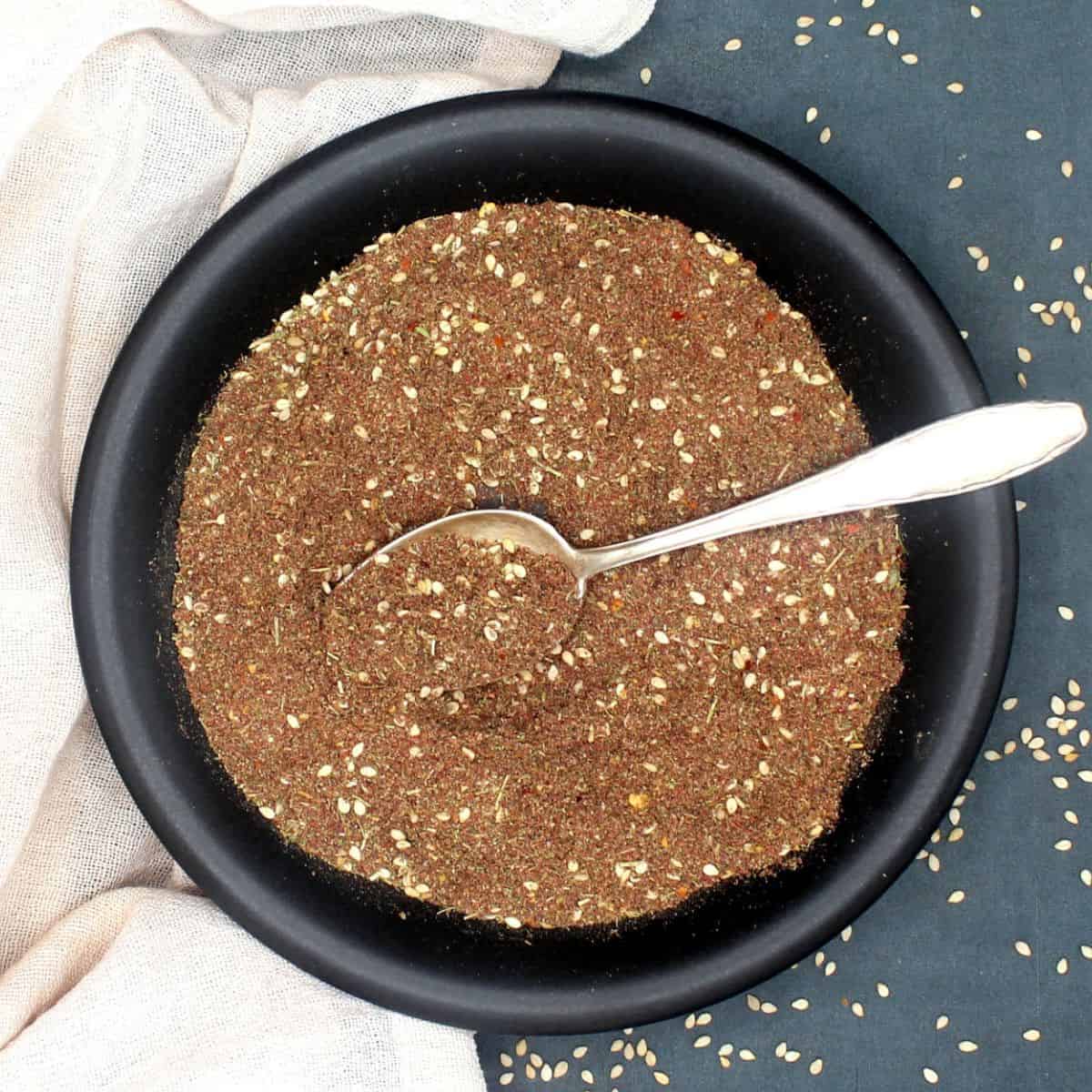A homemade roti is already very healthy. But we’ve made it even healthier by adding to it the nourishing goodness of moong (mung bean) sprouts and spinach. This is quite likely the world’s healthiest roti and it’s so soft and very, very delicious. The roti is perfect for weight loss but it’s also great if you’re just looking to sneak more healthfulness into your family’s meals.
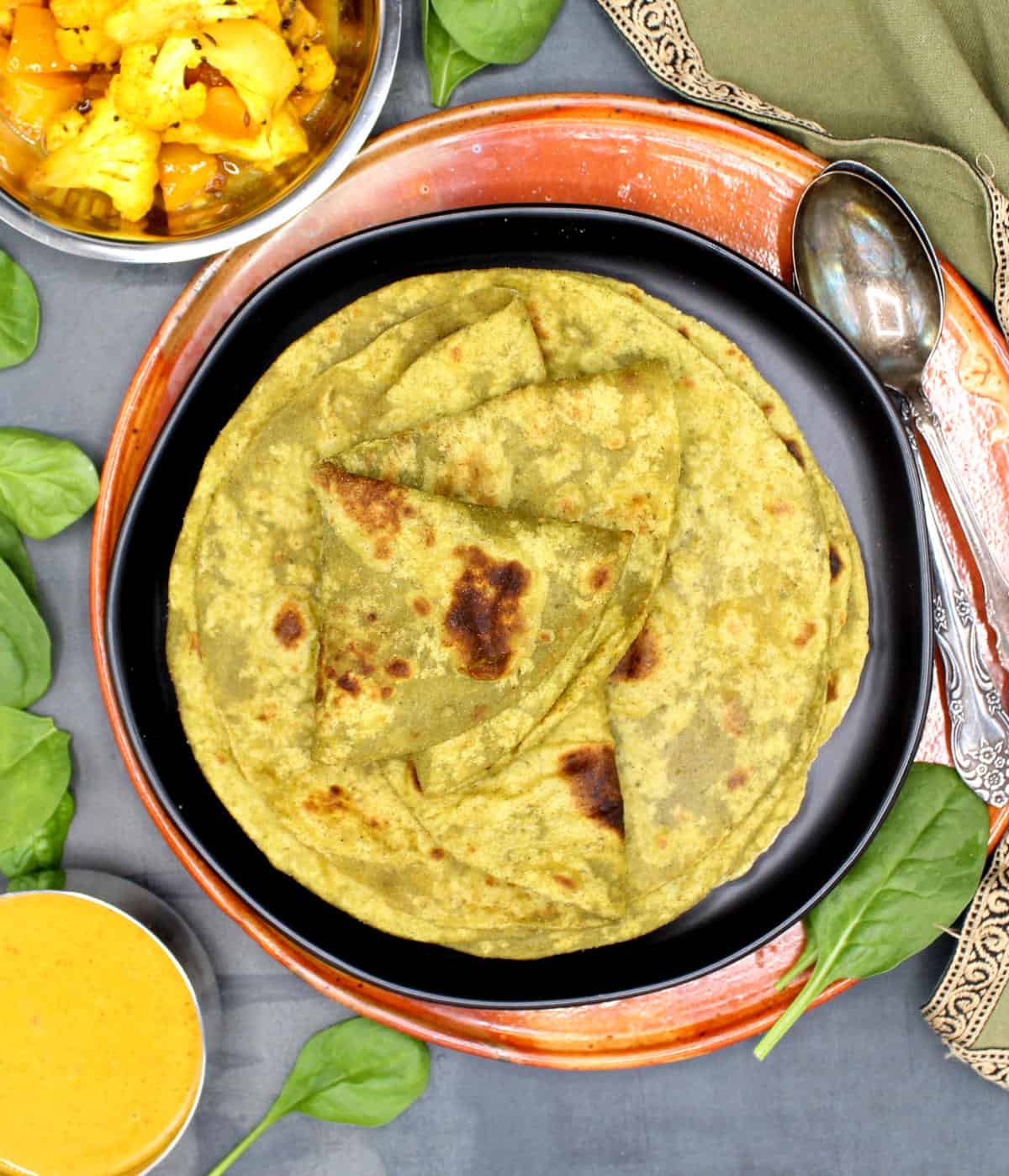
In summer I love cooking with sprouted beans and lentils. Foods like these awesome sprouted mung bean burgers, sprouted moong chilla and this classic Maharashtrian curry, misal, are not just delicious and fun, they are also made immensely healthy by the sprouted beans.
I already have a delicious legume-based roti recipe I make often–this delicious besan roti, which is also gluten-free. In my quest to add more sprouts to my family’s diet, I created this latest recipe: a high-protein roti that I think could easily be the world’s healthiest roti. It is loaded not just with the goodness of whole wheat flour, but it also has a walloping dose of mung bean sprouts and spinach.
Table of Contents
Sprouted legumes are a great addition to your diet
- Legumes are a great source of protein and studies show that sprouting them increases their protein content.
- Sprouted legumes are loaded with peptides, which can help lower blood pressure. Studies show that peptides are produced in large concentrations when seeds sprout.
- The proteins and peptides in sprouted legumes can also reduce the risk of cancer.
- Sprouts are loaded with fiber, which helps digestion.
- Sprouting beans reduces their phytic acid content, which can interfere with the digestion of some minerals. This also helps reduce bloating and flatulence.
- Studies show that the sprouting beans increases antioxidant levels in the beans. Antioxidants help neutralize free radicals in the body and guard against a host of diseases, including cancer and heart disease.
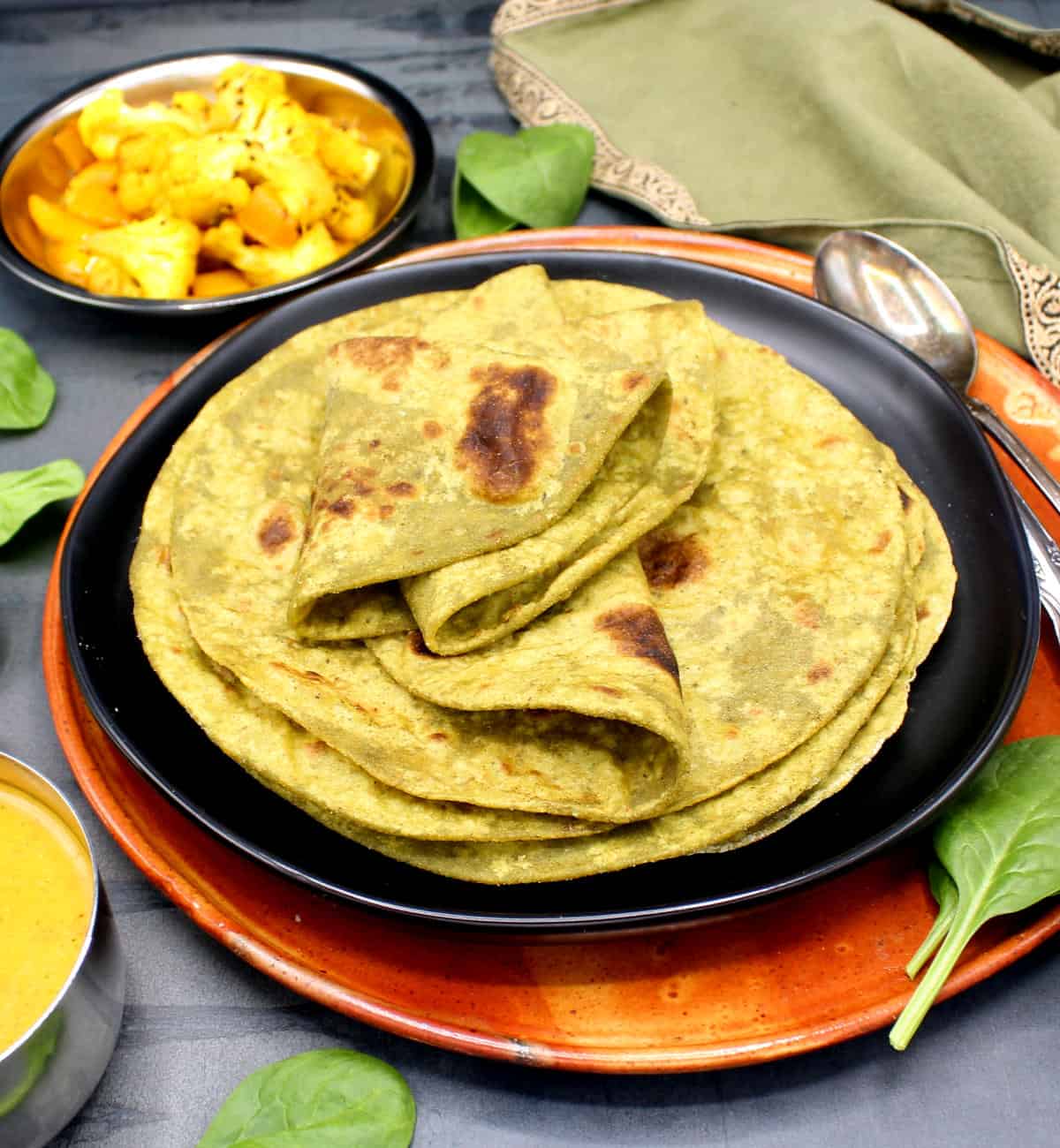
Why you will love this high protein roti
- Soft and delicious roti. You really won’t sacrifice any of the joy of eating a delicious roti. These rotis are soft and flavorful and so yummy.
- Loaded with healthfulness. The sprouts are healthy, of course, but the whole wheat flour and the spinach pack even more health and nutrition into these rotis. There is no added fat in the roti dough. You can roast the rotis without any oil or, for softer rotis, use a cooking spray.
- Great for weight loss. There are six grams of protein in each of these rotis, and three grams of dietary fiber, besides a ton of nutrients from the sprouts, whole wheat and spinach. Cutting out the oil while roasting brings down the fat content of each roti to just 1 gram. These rotis are so filling and satisfying, more so than a regular roti, so you can easily eat less and feel fuller.
- Simple recipe. There are just three ingredients in this recipe. If you already know how to make rotis, you can easily master these high protein rotis. If you are a beginner, watch my video on how to make rotis after reading through this post. There is a learning curve to making the perfect roti, but as with all cooking, you’ll get better with practice.
- Soy-free, nut-free and vegan recipe.
Ingredients
Check recipe card below for exact ingredient quantities.
- Atta or whole wheat flour. Atta, which is a more finely milled whole wheat flour, is always preferred for rotis, because it creates softer rotis. It is easily available online or at Indian grocery stores. If you can’t source it, you can replace it with regular whole wheat flour.
- Mung bean sprouts (moong/vigna radiata sprouts). I intend to do a detailed post for you on how to sprout mung beans without any special equipment. But for now you can find a quick primer on how to sprout moong beans in my sprouted moong salad recipe post.
- Baby spinach. You can use regular spinach.
Variations
- You can substitute the spinach with other greens, including kale, watercress or Swiss chard. You can also use other veggies like carrots and beets. If using carrots or beets, grate them very finely. Blend the sprouts separately. Place in the bowl with the carrots/beets and a bit of salt and let them stand five minutes so the veggies can express their moisture. Then go ahead and make the dough.
- If you use a vegetable that expresses a lot of moisture, like zucchini or cucumber, add less water to the sprouts when blending.
- I like to keep this high-protein roti plain because I serve it just like you would a regular roti, but if you want to you can add seasonings to it, like cayenne pepper, turmeric, ground cumin, herbs like cilantro or mint, and grated garlic or ginger.
How to make high protein roti

Place the sprouts and the baby spinach in a blender jar with 1 cup water. Blend until very smooth.

Pour into a large bowl.

Add 2 cups flour and salt to the bowl.

Knead until a smooth dough forms, adding more flour if needed, a little at a time. The dough should be soft but not sticky. Cover the bowl with a lid and set aside for at least 30 minutes.
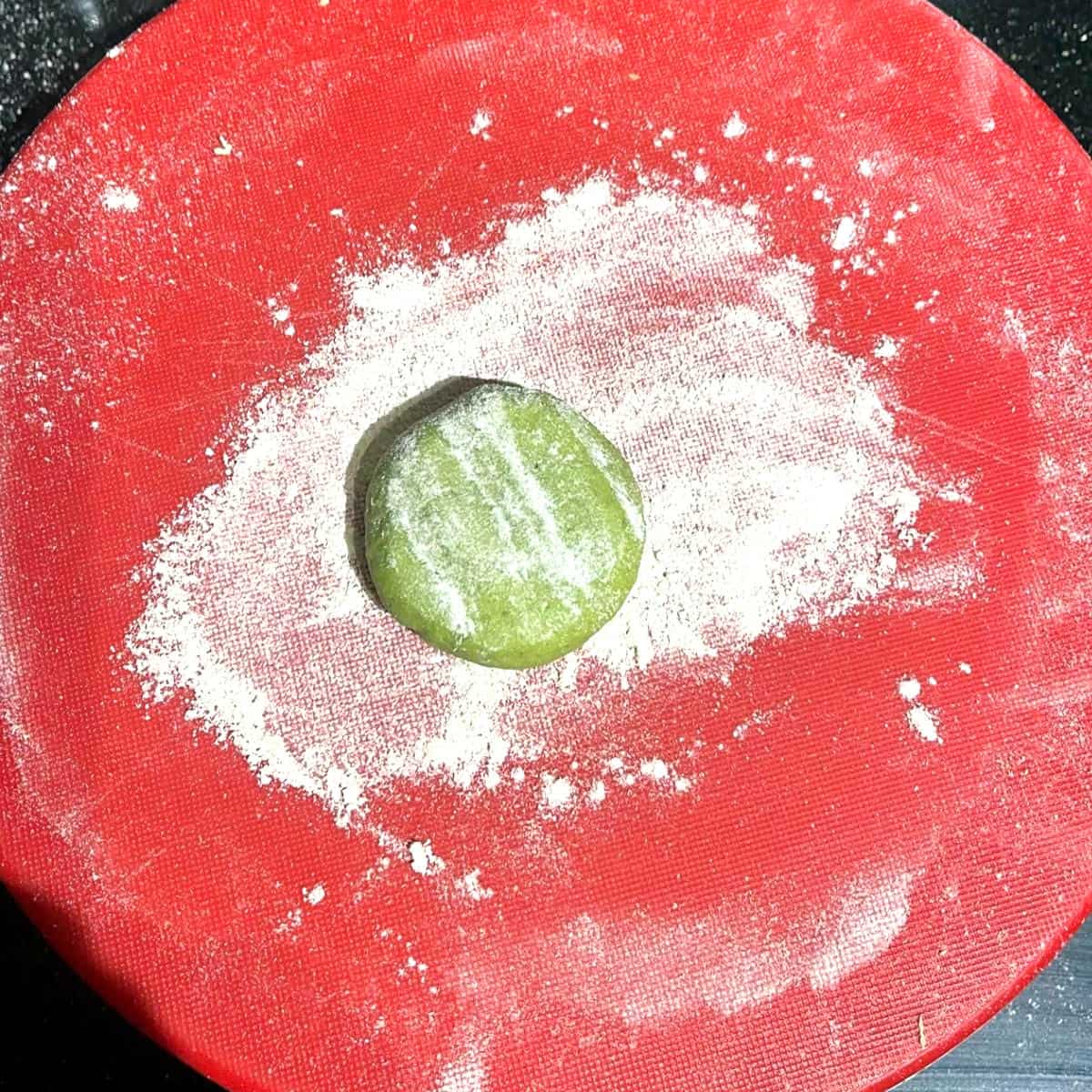
Divide the dough into 12 portions. Roll each into a smooth ball. Place one on a floured surface and sprinkle some flour on top.
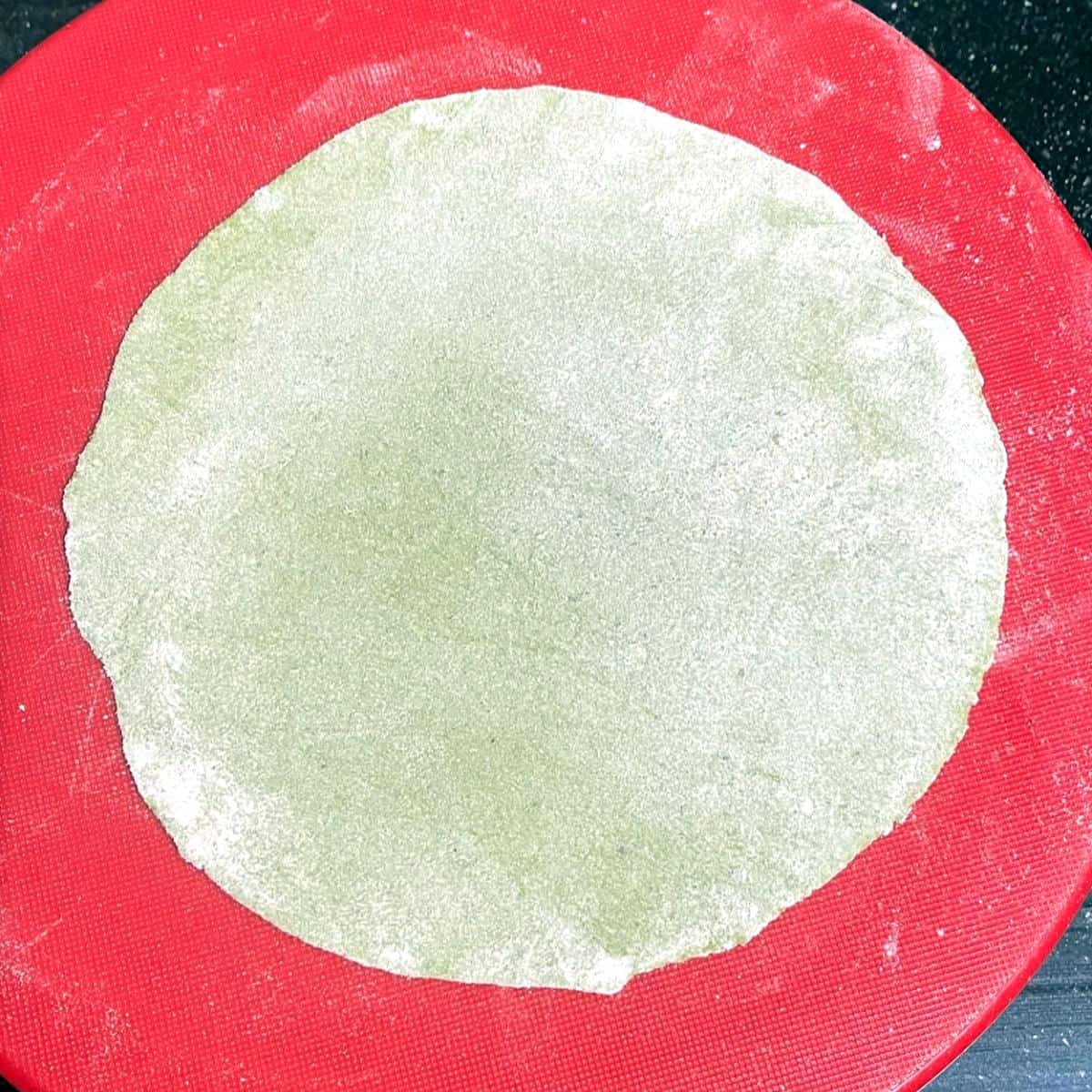
Roll into a roti, about seven inches in diameter. Sprinkle more flour if necessary. Try and roll the roti so the thickness is even. This may not be possible the first time you make rotis, but you will get better at it with practice.
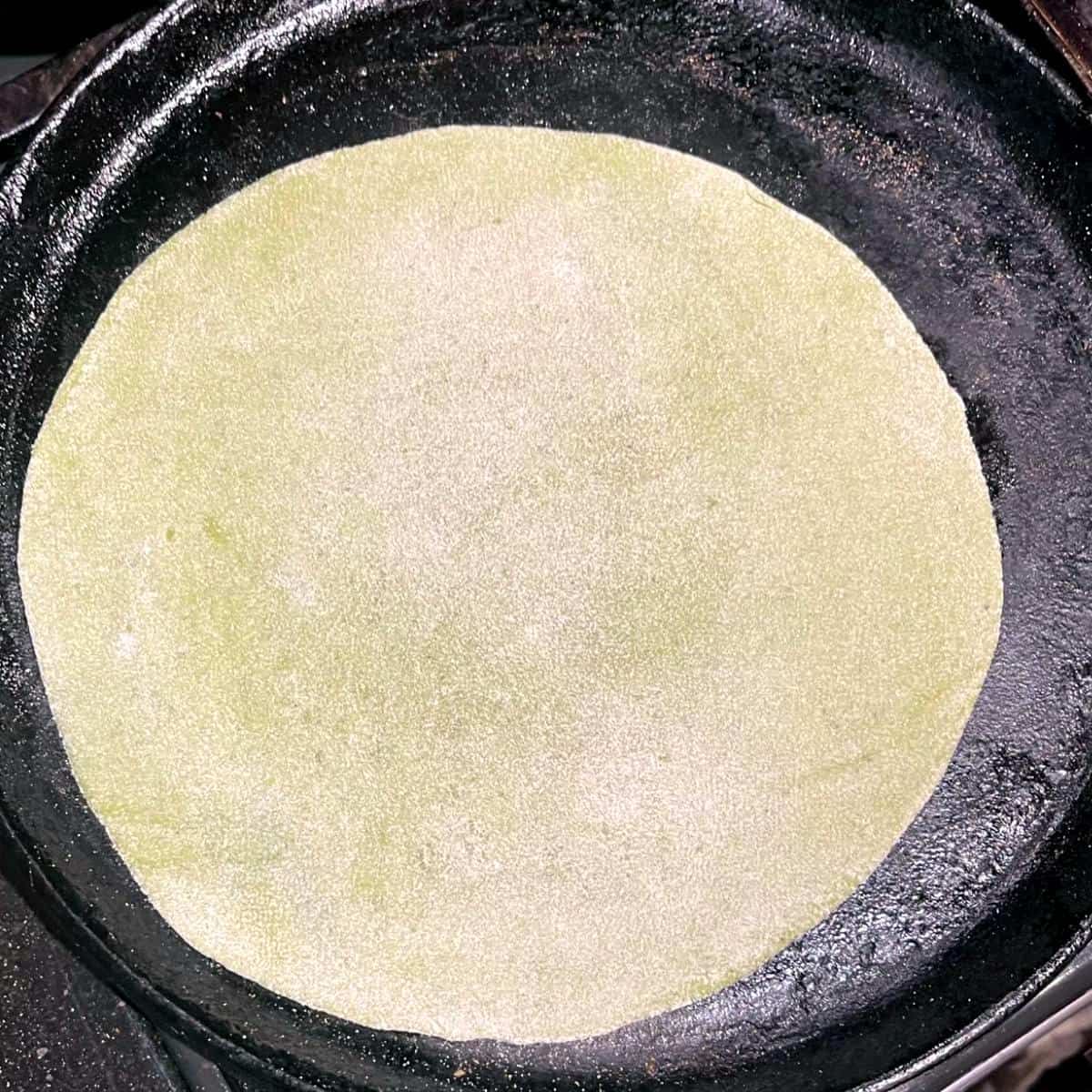
Heat a cast iron griddle or tava. Place the roti on the hot griddle and wait until small bubbles form.
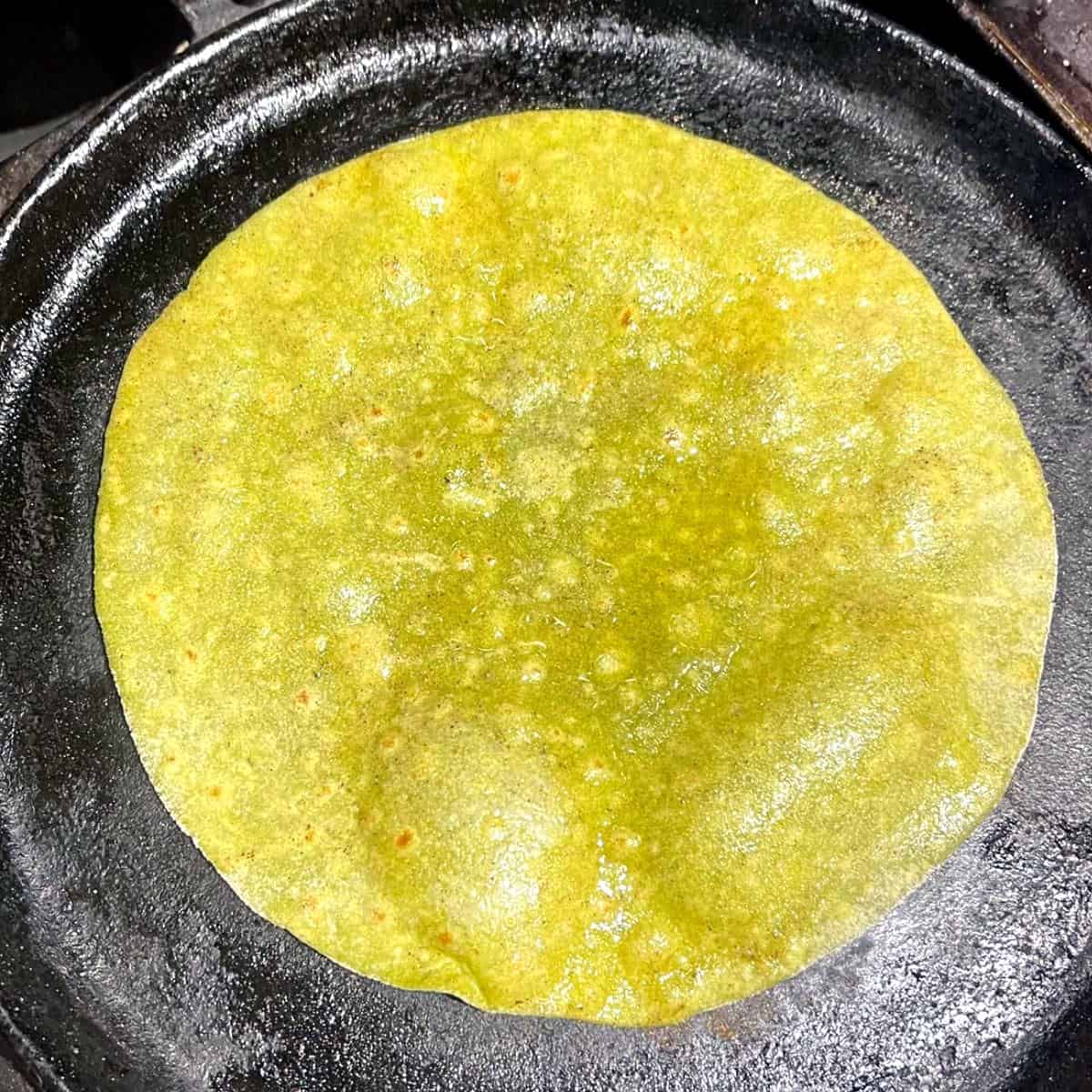
Flip and brush on some oil or spray with cooking spray. You can also skip the oil or cooking spray altogether for oil-free rotis. Cook until brown spots appear on the underside, then flip again and cook for a few more seconds. Serve hot.
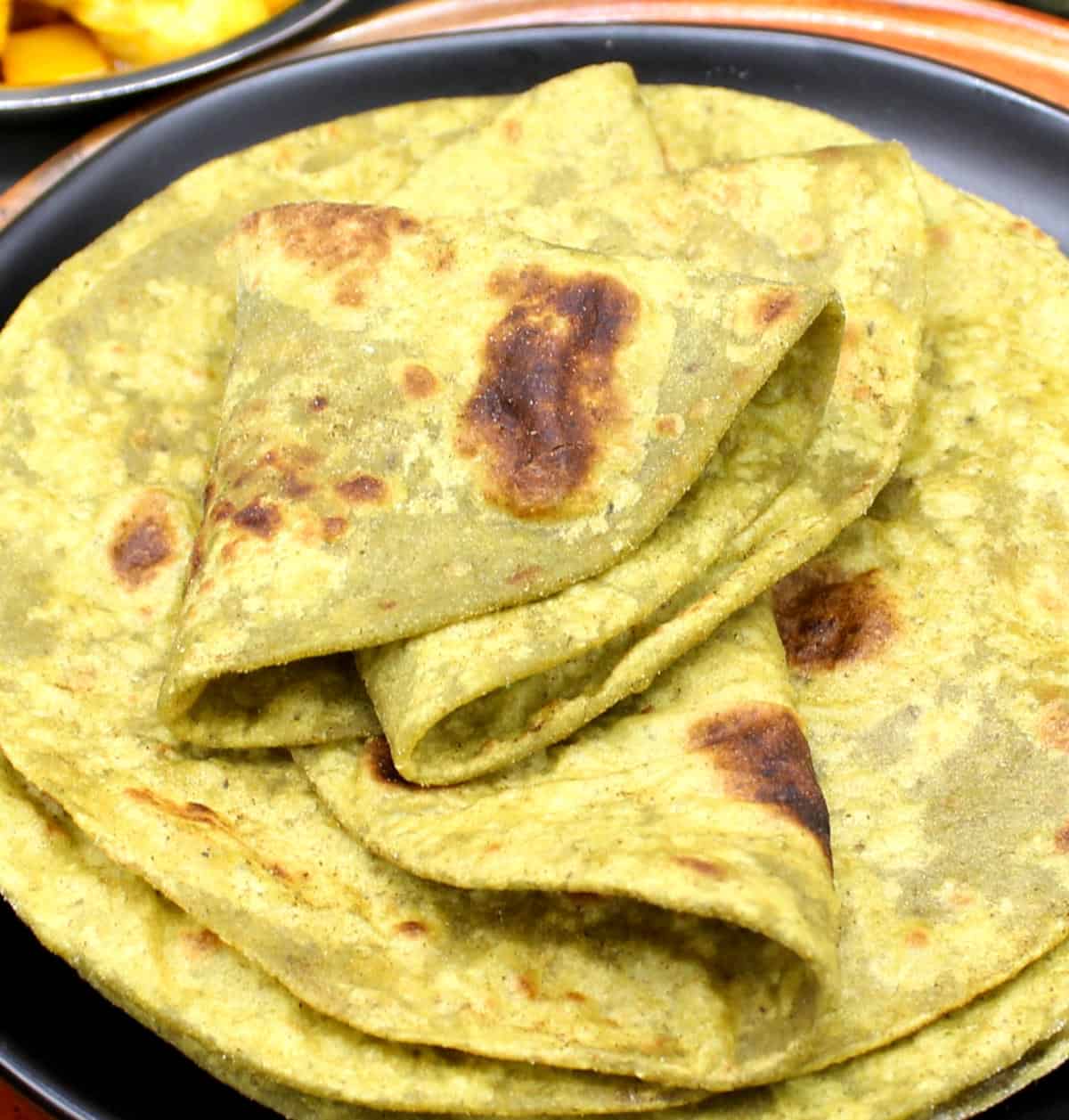
Helpful tips
- Make sure you blend the sprouts really fine. Any large pieces of sprouts will make it harder to roll out the rotis.
- The roti dough should be soft but it should not be tacky or sticky, or this will make it very difficult to roll out the rotis. If the dough is sticky, add more flour.
- Always give time (at least 30 minutes) for roti dough to relax after you’ve kneaded it. This makes it much easier to roll out the rotis. Flour the surface and the rolling pin and move the roti often as you roll it to make sure it doesn’t stick to the surface.
- You can use as little or as much salt in this recipe depending on your taste and health requirements. I usually add a teaspoon. Because Indian breads get dunked in a curry or sauce that usually has salt in it, you are hardly likely to notice if the roti has less salt.
- Keep the rotis wrapped in a kitchen towel after roasting until ready to serve. This keeps them soft. Serve immediately.
Storage instructions
Rotis should ideally be eaten right after you make them, because that’s when they are freshest and softest. Rotis will become tougher as they stand. For the best flavor and texture, make only as many rotis as you need at a time and store the dough in the fridge for up to three days. You can also freeze the roti dough for up to three months.
If you do end up with leftover rotis on hand, refrigerate them for up to four days in an airtight container. Spray some water on the surface of the roti and reheat on the griddle or the microwave until warmed through and soft again.
Love this high-protein roti recipe? Check out more Indian bread recipes on Holy Cow Vegan!

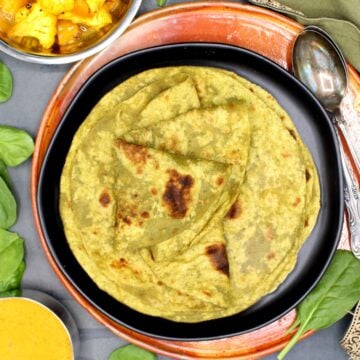
High-Protein Roti
A healthy, high-protein roti made with the nourishing goodness of moong (mung bean) sprouts, spinach and whole wheat flour. This is quite likely the world’s healthiest roti and it’s so soft and very, very delicious. The roti is perfect for weight loss but it’s also great if you’re just looking to sneak more healthfulness into your family’s meals.
Print Recipe
Pin Recipe
Review Recipe
Servings: 12 rotis
Calories: 160kcal
Prevent your screen from going dark
Instructions
-
Place the sprouts and the baby spinach in a blender jar with 1 cup water. Blend until very smooth. Place in a large bowl.
-
Add 2 cups flour and salt to the bowl. Knead until a smooth dough forms, adding more flour if needed, a little at a time. The dough should be soft but not sticky. Cover the bowl with a lid and set aside for at least 30 minutes.
-
Divide the dough into 12 portions. Roll each into a smooth ball. Place one on a floured surface and sprinkle some flour on top.
-
Roll into a roti, about seven inches in diameter. Sprinkle more flour if necessary. Try and roll the roti so the thickness is even. This may not be possible the first time you make rotis, but you will get better at it with practice.
-
Heat a cast iron griddle or tava. Place the roti on the hot griddle and wait until small bubbles form.
-
Flip the roti and brush on some oil or spray with cooking spray. You can also skip the oil or cooking spray altogether for oil-free rotis. Cook until brown spots appear on the underside, then flip again and cook for a few more seconds. Serve hot.
Recipe notes
- Blend the sprouts really fine. Any large pieces of sprouts will make it harder to roll out the rotis.
- The roti dough should be soft but it should not be tacky or sticky, or this will make it very difficult to roll out the rotis. If the dough is sticky, add more flour.
- Always give time (at least 30 minutes) for roti dough to relax after you’ve kneaded it. This makes it much easier to roll out the rotis. Flour the surface and the rolling pin and move the roti often as you roll it to make sure it doesn’t stick to the surface.
- You can use as little or as much salt in this recipe depending on your taste and health requirements. I usually add a teaspoon. Because Indian breads get dunked in a curry or sauce that usually has salt in it, you are hardly likely to notice if the roti has less salt.
- Keep the rotis wrapped in a kitchen towel after roasting until ready to serve. This keeps them soft. Serve immediately.
Nutrition
Serving: 1roti | Calories: 160kcal | Carbohydrates: 29g | Protein: 6g | Fat: 3g | Saturated Fat: 0.5g | Polyunsaturated Fat: 1g | Monounsaturated Fat: 2g | Sodium: 199mg | Potassium: 213mg | Fiber: 3g | Sugar: 0.4g | Vitamin A: 471IU | Vitamin C: 3mg | Calcium: 20mg | Iron: 2mg


